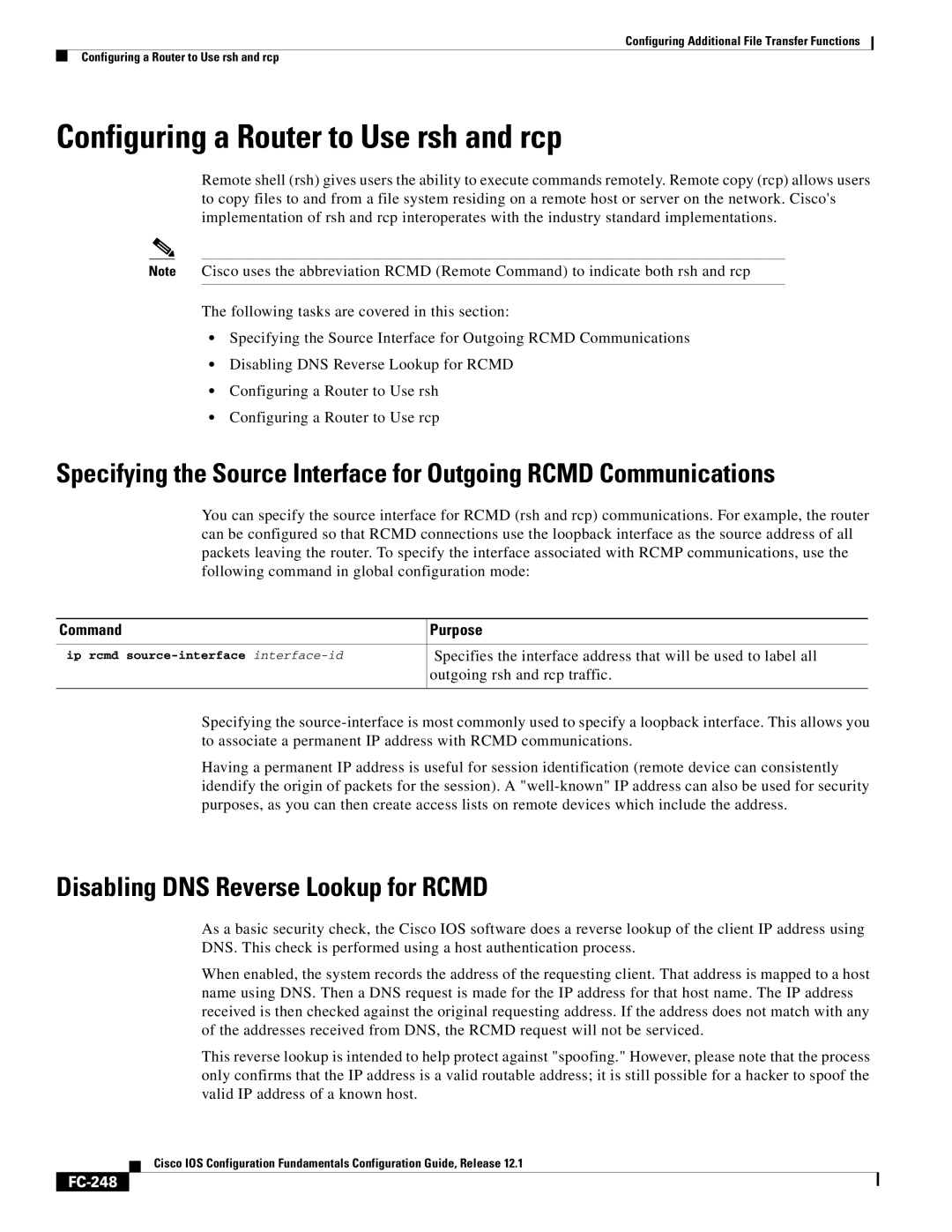
Configuring Additional File Transfer Functions
Configuring a Router to Use rsh and rcp
Configuring a Router to Use rsh and rcp
Remote shell (rsh) gives users the ability to execute commands remotely. Remote copy (rcp) allows users to copy files to and from a file system residing on a remote host or server on the network. Cisco's implementation of rsh and rcp interoperates with the industry standard implementations.
Note Cisco uses the abbreviation RCMD (Remote Command) to indicate both rsh and rcp
The following tasks are covered in this section:
•Specifying the Source Interface for Outgoing RCMD Communications
•Disabling DNS Reverse Lookup for RCMD
•Configuring a Router to Use rsh
•Configuring a Router to Use rcp
Specifying the Source Interface for Outgoing RCMD Communications
You can specify the source interface for RCMD (rsh and rcp) communications. For example, the router can be configured so that RCMD connections use the loopback interface as the source address of all packets leaving the router. To specify the interface associated with RCMP communications, use the following command in global configuration mode:
Command | Purpose |
|
|
ip rcmd | Specifies the interface address that will be used to label all |
| outgoing rsh and rcp traffic. |
|
|
Specifying the
Having a permanent IP address is useful for session identification (remote device can consistently idendify the origin of packets for the session). A
Disabling DNS Reverse Lookup for RCMD
As a basic security check, the Cisco IOS software does a reverse lookup of the client IP address using DNS. This check is performed using a host authentication process.
When enabled, the system records the address of the requesting client. That address is mapped to a host name using DNS. Then a DNS request is made for the IP address for that host name. The IP address received is then checked against the original requesting address. If the address does not match with any of the addresses received from DNS, the RCMD request will not be serviced.
This reverse lookup is intended to help protect against "spoofing." However, please note that the process only confirms that the IP address is a valid routable address; it is still possible for a hacker to spoof the valid IP address of a known host.
Cisco IOS Configuration Fundamentals Configuration Guide, Release 12.1
